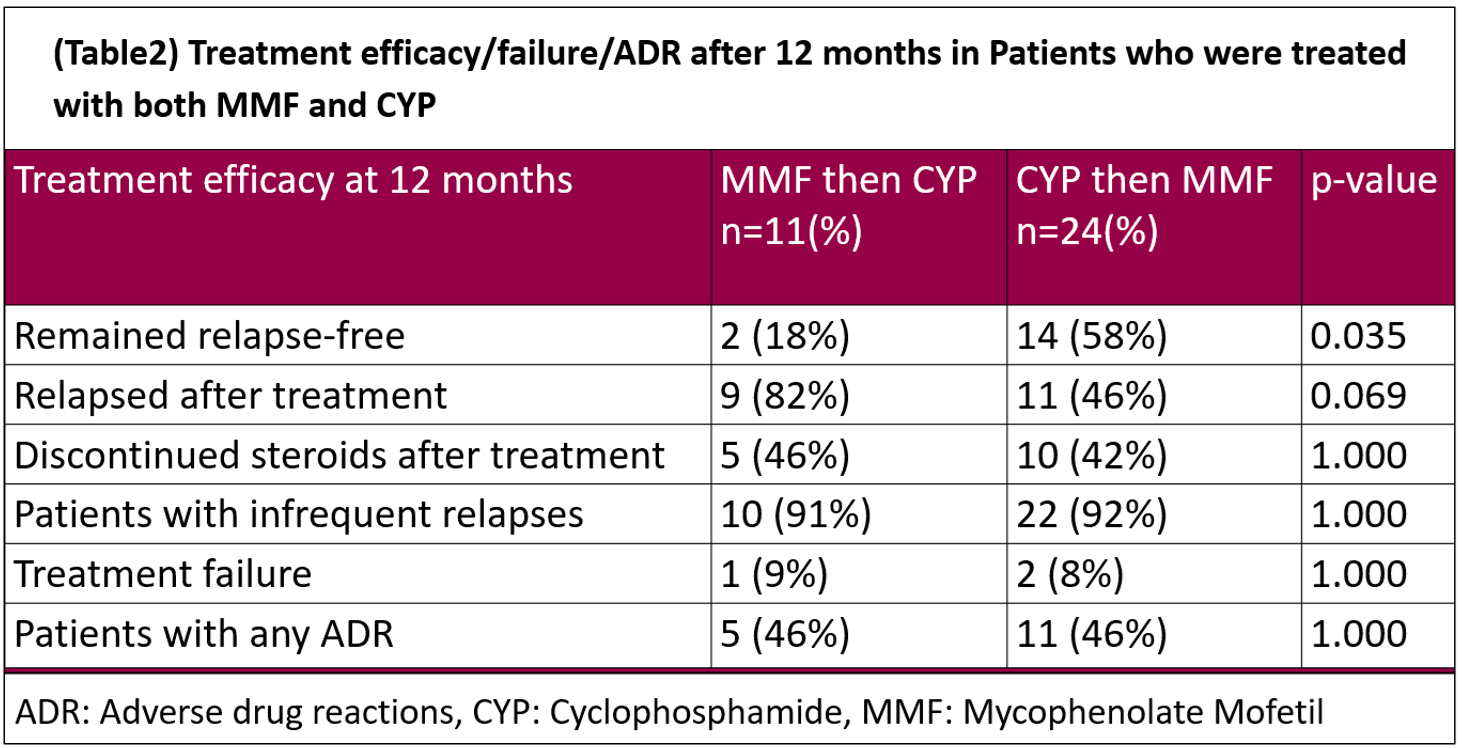Nephrology 3
Session: Nephrology 3
595 - Mycophenolate Mofetil versus Cyclophosphamide for Management of Frequently Relapsing Nephrotic Syndrome: A Single-Center Study
Sunday, April 27, 2025
8:30am - 10:45am HST
Publication Number: 595.5789
Hadeel Haddad, Children's Hospital of Michigan, Dearborn, MI, United States; Ahmad Farooqi, Central Michigan University College of Medicine, Detroit, MI, United States; Manpreet Grewal, Children's Hospital of Michigan, Detroit, MI, United States; Rossana Baracco, Central Michigan University College of Medicine, Detroit, MI, United States; Melissa J. Gregory, Central Michigan University College of Medicine, Detroit, MI, United States; Amrish Jain, Children's Hospital of Michigan and Central Michigan University School of Medicine, Detroit, MI, United States; Gaurav Kapur, Central Michigan University, DETROIT, MI, United States; Wael M. Abukwaik, Children Hospital of Michigan, Detroit, MI, United States
- HH
Hadeel Haddad, MD. (she/her/hers)
Pediatric Nephrology Fellow
Children's Hospital of Michigan
Dearborn, Michigan, United States
Presenting Author(s)
Background: Idiopathic nephrotic syndrome (INS) is the most common form of childhood nephrotic syndrome. Approximately two-thirds of patients require steroid-sparing agents due to frequent relapses (FR) or steroid-dependence (SD). Mycophenolate Mofetil (MMF) and Cyclophosphamide (CYP) are commonly used as steroid-sparing agents in patients with FR/SD INS. There are a few studies comparing MMF or CYP in terms of efficacy and adverse reactions in treating FR/SD INS.
Objective: The primary aim of this study is to compare the efficacy of MMF and CYP for treating FR/SD INS. We also evaluated the adverse reactions (ADR) of these treatments.
Design/Methods: This is a retrospective study of children (1-18 years of age) diagnosed with FR/SD INS at the Children’s Hospital of Michigan who were treated with either MMF, CYP or both from January 2003 to December 2021. Patients with infantile or secondary Nephrotic syndrome were excluded. Data collection was done by charts review in the electronic medical records. Patients were identified using the ICD 10 codes. SAS (version 9.4) was used for statistical analysis. Fischer and Chi Square tests were applied.
Results: A total of 101 patients were included, (64% males; 42% Caucasians and 30% African Americans) with a median age of 55 months (IQR 58) at diagnosis and a median age of 81 months (IQR 78) at the time of starting treatment with MMF or CYP. The proportion of patients who were relapse-free after 12 months was similar in the MMF group (68%) as compared to the CYP group (59%), however, it was significantly higher in the group that was switched from CYP to MMF (58%) compared to the group that was switched from MMF to CYP (18%) (p-value=0.035) (Figure1). The relapse rate after 12 months of treatment was highest amongst patients who were switched from MMF to CYP (82%) as compared to the patients who were switched from CYP to MMF (46%), patients treated with CYP only (41%) and lowest in patients who were treated with MMF only (32%), however that difference was statistically insignificant (Table1)(Table2). The ability to discontinue steroids was similar and statistically insignificant between all the groups. ADR percentage was higher in the CYP group compared to the MMF group, but there was no difference in the ADR percentage between the groups of patients who received both medications.
Conclusion(s): MMF was as effective as CYP in keeping patients relapse-free for 12 month duration when either treatment was used with less ADR associated with MMF. More studies are needed to compare the efficacy of these two medications for treating FR/SD INS.
letter.pdf
(Table1) Treatment efficacy/failure/ADR after 12 months in Patients who were treated with either MMF or CYP alone
.png)
(Table2) Treatment efficacy/failure/ADR after 12 months in Patients who were treated with both MMF and CYP


